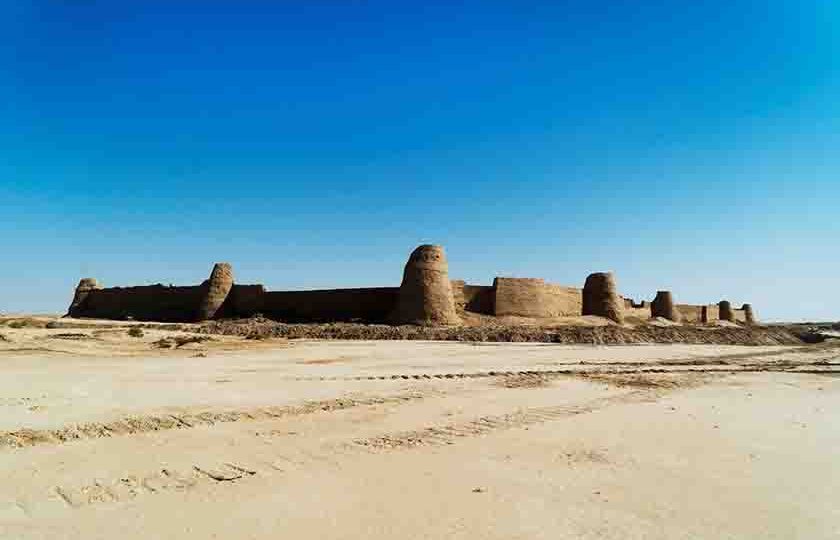Rostam Castle is one of the most valuable historical monuments and places of interest in Sistan and Baluchistan province. With a history of 500 years, this castle is attributed to the legendary warrior of Iran and its clay and mud facade shows its historical grandeur and grandeur in the desert.
Rostam Castle is one of the famous places of Zabul and its vast construction dates back to the Seljuk to Safavid eras. The area where the castle is located is known as the historical area of Hozdar. There are remains of an ancient city with brickwork, numerous buildings, an entrance gate, a guard tower and 15 defense towers in the Hozdar area.
Rostam Zabul Castle belongs to the Sistani Khans during the Safavid period; those who ruled under the names of Rais Rostam, Rais Bahman, etc. in Hozdar region. This castle is considered the biggest and most magnificent castle of the Islamic era of Sistan. The greatness of the Hozdar region has given this castle a legendary historical aspect and it is named after the greatest and most famous person of Sistan, Rostam. There are also a collection of about 15 prehistoric hills in this area. Archaeologists have discovered a number of silver coins related to Sassanid King Purandakht in this area.
Due to its distance from the main road, Rostam Zabul Castle is less visited by the people of the region and by travelers and tourists. Despite factors such as weather conditions, the change of the Hirmand river, and the lack of human and financial resources, this historical building is being destroyed, and unauthorized excavations have accelerated its destruction.
In general, taking into consideration the historical texts as well as the surviving works of the architecture of Rostam Castle and the accuracy of surface pottery, the construction of this castle can be attributed to the middle of the Islamic centuries. Rostam Castle was used until the Safavid period. It is believed that this castle was abandoned four to five hundred years ago.
So far, no scientific archaeological research has been done in this castle; but the pieces of glazed and unglazed pottery cast tell of a long history.
The main elements of the castle’s architecture are the entrance gate on the eastern front, the guard and defensive towers of the castle fence, the moat, the yakhdan, and the most important part of the castle. Also, other internal residential facilities are among the other constituent elements of Rostam Castle, which have been destroyed to some extent.
The awe and strength of the entrance gate and 15 defensive towers surrounding the magnificent castle still shines against the adversities of nature. The beams inside the wall and the towers and congresses of the fence clearly show the defense status of the castle.
Shahneshin: The main elements of Shahneshin include the central courtyard, north and south porches, a series of different rooms around the central courtyard and the ruler’s building, which is connected to the above complex and the security building. In some rooms, by placing bricks next to each other, they have created beautiful lattice-like windows, which is one of the architectural features of the region.
Fence: The fence or rampart of the castle is built using the natural position of the castle from east to west, with an irregular polygonal plan. According to the existing plan, the castle was built based on a predetermined plan; So that the northern side of the castle is a very suitable wind breaker against the 120-day winds of Sistan.
Yakhdan: It is located in the eastern part of the castle and facing Shahneshin, which includes a relatively large circular space five meters above the ground.
Stable: It is located a short distance from Shahneshin Citadel. Behind it, there is a long building with rows of mangers on its sides.
Moat: Currently, a moat with a width of 7.5 meters (with a change in size in some parts) surrounds the castle. Due to the accumulation of soil, the depth of the ditch is not very deep.
The climatic conditions and the strategic location of the region have prompted architects and builders to create a strong fortress for military-residential operations. For this purpose, raw clay has been used, and in some cases, plaster traces can also be seen in the rooms.




